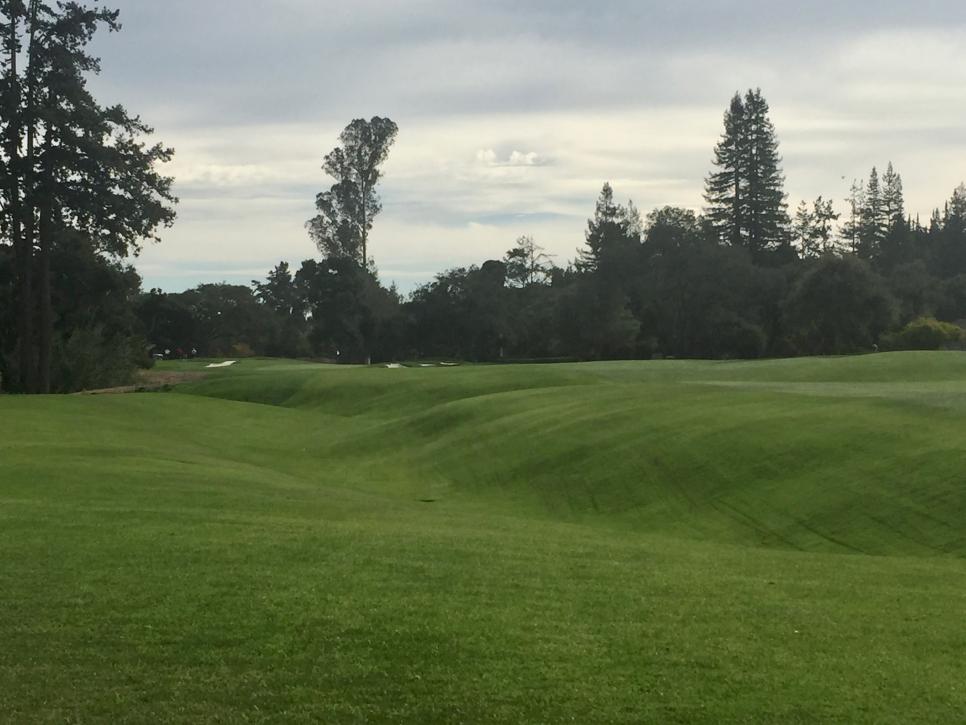Each spring the Alister MacKenzie Society sponsors the Ray Haddock Lido Prize, a competition for amateur architects to submit drawings of a theoretical golf hole that embodies the design principles of Alister MacKenzie.
This year the requirement was to design a par 4 between 360 and 460 yards, with few other restrictions, to be judged on a variety of factors including the overall creativity, use of alternate routes to the hole, the use of elevations in the green complex and the theoretical degree of construction required to build the hole.
Perhaps the most critical part of the judging is how well the hole adheres to the 13 design principles MacKenzie laid out in a 1920 essay. Some of the guidelines he wrote of concern the overall organisation and order of the holes—returning nines, a balance of shorter and longer holes, no long walks from green to tee.
Others are more specific to the architecture, principles that continue to provide a roadmap for creating intelligent, complex, enduring holes, even if several generations of subsequent architects chose to disregard them, if they were aware at all. Who can argue with the ideal of building courses that can be played without the “annoyance and irritation” of searching for lost balls, as MacKenzie wrote, of designing heroic carries for skilled players while offering workarounds for the plodder, of courses that are still fun even if a big score is “piling up” or the pleasantness of artificially made surrounds that nevertheless blend in with nature.
These attributes are what judge Tommy Naccarato was searching for when examining the 2023 Lido nominees. Naccarato, a historian and graphic artist who works with architects Gil Hanse and Jim Wagner, has studied MacKenzie for over 30 years. To prep for the assignment of judging the Lido contest he stopped off at Cypress Point on the drive from his home in Los Angeles to the Bay area, where the drawings would be viewed, to find the right mindset.
The Society received 55 drawings from 10 different countries. Ten were preselected as finalists.
“Every one of the drawings was unique,” Naccarato says. “I was impressed with the drawing and artistry, and some of the outside-the-box thinking,” he says. “Dr MacKenzie was an outside-the-box thinker, too. I think that’s really important to put onto paper.”
After several hours of examining the finalists, Naccarato isolated several that stood out. Ultimately he chose the par 4 designed by Craig Snyder, a golf course artist from Marin County, California.
“It was the most MacKenzie-looking to me in terms of the bunkering and the scale and the perspectives. At one point I thought I was going to eliminate it because initially I didn’t get it, but the more I looked at it the more it reached out to me and just looked more MacKenzie than the other entries.”
Snyder’s hole (above sketch) is a long par 4 with a strand of bunkers splitting the fairway diagonally, creating a fairway to the left for short hitters and a longer fairway to the right for drives able to carry the hazard. The triangular green, low in front and rising toward an upper ridge at the back left corner, can receive incoming shots along two axes.

This grassy barranca at Pasatiempo’s par-4 14th inspired Craig Snyder’s winning design. Stephen Hennessey
The inspiration for the hole is the 14th at Pasatiempo, designed by MacKenzie in the late 1920s (he lived in a house near the sixth green). The most notable element of that hole is a deep, grassed barranca that snakes in similar orientation up the left centre of the fairway. In his design, Snyder added sand bunkers to the depression while leaving other parts grassed. The primary addition, one that adds complexity and challenge to the hole, is a bunker short left of the putting surface meaning approaches from the left, usually a longer shot, must fly nearly all the way to the green. From the right side of the fairway balls can be chased through a gap, and the left-to-right slope of the green will feed balls to right and rear pins.
“That was the first thing I thought of, was Pasatiempo 14, and the 13th around the green, and that’s okay because MacKenzie did that too and would reuse a particular feature or strategy or landform in different ways,” Naccarato says. “Snyder’s hole uses specific MacKenzie features as inspiration, and I thought that was key.”
Snyder received a prize of $US3,000 and will be awarded an additional $US2,000 to help cover travel expenses if he chooses to attend the annual Alister MacKenzie Society gathering in Cork, Ireland this summer. He joins an impressive list of past Ray Haddock Lido prize winners that includes several current practicing designers like Thad Layton (VP of Arnold Palmer Course Design), David Hoekstra, Riley Johns and Clyde Johnson. Last year’s repeat winner, Bo Links (he has won the competition four times), did not enter a drawing this year.
• • •



